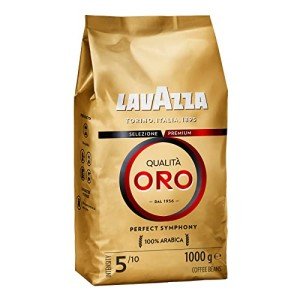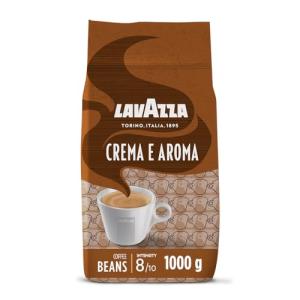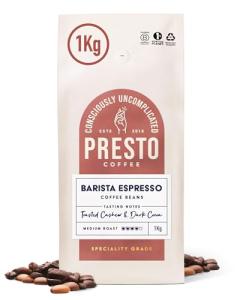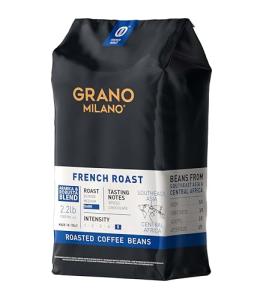Italy is synonymous with coffee, both in terms of its rich heritage and the exceptional quality of its beans. For coffee connoisseurs and casual drinkers alike, classic Italian coffee beans deliver an experience that transcends a mere caffeine fix; they are a full-bodied expression of culture, tradition, and artistry. This guide explores the allure of Classic Italian Coffee Beans, focusing on the quintessential 1Kg bag that many enthusiasts opt for.
Understanding Classic Italian Coffee Beans
Italian coffee is often characterized by its rich, bold flavors and robust aroma. The main types of beans that are used include Arabica and Robusta, each providing a unique flavor profile and experience.
Table 1: Types of Coffee Beans
| Bean Type | Flavor Profile | Caffeine Content | Common Uses |
|---|---|---|---|
| Arabica | Smooth, Fruity, Mild | Lower than Robusta | Espresso, Americano, Drip Coffee |
| Robusta | Strong, Earthy, Bitter | Higher than Arabica | Espressos, Blends, Instant Coffee |
-
Arabica Beans: Known for their smooth, mild taste, arabica beans are generally preferred in high-end blends. They account for about 60-70% of coffee production in Italy and are often used in espresso.
-
Robusta Beans: With a stronger and more bitter flavor, robusta beans have a higher caffeine content and are frequently blended with arabica beans for a more robust flavor. They are commonly found in espresso blends.
Characteristics of Classic Italian Coffee
Italian coffee has several defining characteristics:
- Rich Aroma: The smell of freshly brewed Italian coffee is enough to awaken the senses and invite one to indulge.
- Full-Bodied Flavor: Classic Italian coffee is known for its robust flavor, often with a hint of chocolate or nuts.
- Balanced Acidity: Unlike some coffee varieties, Italian blends usually aim for a harmonious balance of acidity and sweetness.
- Crema: A good Italian espresso should have a rich, foamy layer on top known as crema, enhancing both the appearance and taste.
The Perfect 1Kg Bag Size
For coffee lovers, investing in a 1Kg bag of Italian coffee beans can be a highly rewarding decision. This quantity not only provides value for money but also ensures that one has an ample supply for daily consumption or entertaining friends and family.
Benefits of Buying in Bulk
- Cost-Effectiveness: Buying coffee beans in larger quantities often results in savings compared to purchasing smaller bags.
- Freshness: A sealed 1Kg bag can maintain its freshness for longer, especially if stored properly.
- Versatility: With a larger supply, it’s easier to try different brewing methods, such as espresso, French press, or cold brew.
- Convenience: Reduces the frequency of re-purchasing, allowing for uninterrupted enjoyment of your favorite blend.
How to Brew Classic Italian Coffee
Brewing the perfect cup of Italian coffee is an art. Here are some popular methods to consider:
Table 2: Brewing Methods and Their Characteristics
| Brewing Method | Equipment Needed | Flavor Profile | Brew Time |
|---|---|---|---|
| Espresso | Espresso machine | Bold, concentrated flavor | 25-30 seconds |
| Moka Pot | Stovetop Moka pot | Rich, slightly bitter | 5-10 minutes |
| French Press | French press | Full-bodied, smooth | 4 minutes |
| Drip Coffee | Drip coffee maker | Milder, more diluted | 5-10 minutes |
| Aeropress | Aeropress | Clean, versatile, rich | 2-3 minutes |
Steps for Brewing Espresso
- Measure: Use approximately 18-20 grams of coffee per double shot.
- Grind: Grind the beans to a fine consistency.
- Tamp: Evenly pack the ground coffee into the portafilter.
- Brew: Lock the portafilter into the espresso machine and brew for 25-30 seconds.
- Serve: Enjoy your freshly brewed espresso straight or in a latte or cappuccino.
Storage Tips for Classic Italian Coffee Beans
To ensure that the flavors of the coffee remain intact, proper storage is crucial. Here are some tips:
- Airtight Container: Store beans in an airtight container to prevent exposure to air.
- Cool, Dark Place: Avoid direct sunlight and heat sources, as it can degrade the beans.
- Whole Beans vs. Ground: It’s best to keep the beans whole and grind them just before brewing to preserve freshness.
- Avoid Freezing: While many people freeze their coffee, it’s best not to as frequent temperature changes can compromise flavor.
FAQs
Q: Are Italian coffee beans suitable for all brewing methods?
A: Yes, while they are traditionally used in espresso, they can be brewed using various methods, including French press and drip coffee.
Q: What is the best way to grind Italian coffee beans?
A: The grind size depends on the brewing method. A fine grind is ideal for espresso, while a coarser grind is recommended for French press.
Q: Can I mix different types of beans in the 1Kg bag?
A: While you can blend different beans, for a classic Italian experience, it’s recommended to stick to traditional blends for the authentic taste.
Q: How long do Italian coffee beans last?
A: When stored properly, roasted coffee beans can last for several months, but it’s best to consume them within four to six weeks for optimal freshness.
Q: Is it necessary to use a scale to measure coffee?
A: Using a scale is highly recommended for consistency, but a measuring spoon can be used if a scale isn't available.
In summary, investing in a 1Kg bag of classic Italian coffee beans opens up a world of flavorful experiences that are both delicious and fulfilling. Whether you lean more towards the robust notes of robusta or the nuanced profiles of arabica, each cup can provide not just a caffeine kick, but a journey into Italy’s rich coffee culture. With proper brewing, storage techniques, and an appreciation for the process, everyone can transform their daily coffee ritual into an extraordinary experience. So, why settle for ordinary coffee when you can savor the extraordinary richness of classic Italian coffee beans?






